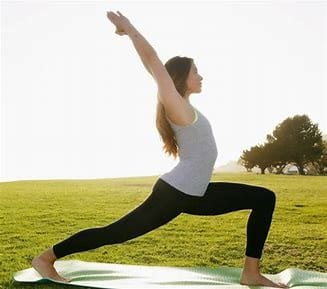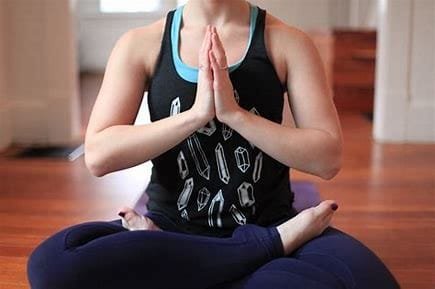Yoga is ancient India’s gift to the entire world, where the profound views of its world religions based on spirituality are practiced. There has been a wide acceptance of yoga by people all over the world nowadays, with these various yoga exercises considered to play an important role in physical health.
What is yoga?
Yoga is both a philosophy and, as such, a way of life. That encompasses all the physical postures, or asanas; breathing exercises, or pranayama; meditation; and ethical and moral advice. There are many styles of yoga—Hatha, Vinyasa, Ashtanga, Iyengar, and Yin—to name just a few, and each comes with its own benefits and way to practice. No matter which style of yoga one chooses, the fundamental intention is always the same: to interlink the body, mind, and spirit for overall wellness and harmony.

The two main components are asanas, which refer to the physical postures. Asanas are easy to perform and enhance flexibility, strength, and balance. Each asana specifically targets a particular group of muscles, preventing injuries and promoting greater physical health. Pranayama is controlled breathing techniques that help increase lung capacity, bring relaxation, and enhance the oxygen supply to the body. It enhances the energy flow in the body and thus has the advantage of better vitality and many other advantages.
Meditation:
The mindfulness and meditation practice in yoga reduces stress, improves concentration, and sharpens the mind. Regular meditation builds inner strength and a calm sense of being.
Philosophy and Ethics:
The basis of yoga is ethical standards for practitioners that entail non-violence (ahimsa) and truthfulness in speech (Satya) as guides towards a peaceful and loving way of living.
Benefits of Yoga to the Body Flexibility
Increased flexibility is the most obvious benefit of doing yoga. The process of doing different asanas stretches and lengthens muscles, thus enhancing flexibility and health for the joints in general.
Flexibility increases can also release tension and discomfort in muscles, hence making possible enhancements in other performance aspects.
Muscle endurance; strengthened
Because yoga postures engage different parts of the muscles, it means that you will have improved muscle tone and strength. Many asanas, for instance, such as Plank or Warrior, help in creating strength and stability in the core.
Strength-building exercises through yoga may help to make you stand or sit with the correct posture so that you will not tear your muscles due to limp postures. Better Posture
Poor posture is mainly attributed to improper body mechanics and too much sitting. By the nature of yoga practice, it focuses on internal body awareness and alignment that promotes healthy posture habits and proper care for the self throughout the day.
Good posture helps relieve pressure and stress from the spine, decreases back pain, and allows comfortability in all daily activities.
Increased Balance

More balance decreases falls and injuries in older adults.
Reduces stress, brings mental clarity
Yoga has been a long-time remedy for relieving stress. Added to deep conscious breathing, movement, and meditation, it soothes the nerves and reduces stress.
Regular practice of yoga leads to clear thinking and concentration, improves cognitive abilities, and makes better decisions.
Cardiovascular Health
Some forms of yoga, like Vinyasa or Ashtanga, are aerobic in nature, meaning they provide cardiovascular health benefits through dynamic movements that raise the heart rate. This can improve blood circulation and heart health.
Yoga has helped minimize occurrences of blood pressure and heart disease as it relaxes and reduces stress levels.
Pain Management
Yoga is much more than helpful as therapy in managing chronic pain, including arthritis, lower back pains, and migraines, because gentle stretches and mindful movements relieve tension and distress.
The mindfulness aspects of the practice are also a vital component in improving people’s perceptions of pain, thereby helping them manage it better.
Quality sleep
Many people are afflicted with sleep disorders that manifest due to the stress or anxiety they suffer. Yoga teaches one to relax and be calm; therefore, it is easier to be relaxed before going to bed.
Constant practice can improve the quality of sleep, wherein a person awakens feeling fresher and more energetic.
Enhanced Respiration
The practice of pranayama in yoga involves controlled breathing that enables one to increase lung capacity and improve respiratory function. In particular, this could help patients suffering from respiratory disorders like asthma.
Increased oxygenation towards the body produces general vitality.
Boosted Immunity
Yoga usually improves immune function through minimizing the production of stress hormones and even promotes one’s general well-being. The smaller the stress levels, the healthier will be the response to the immune system.
Physical activity also improves circulation, meaning that cells get more efficient delivery of nutrients and oxygen.
Conclusion
Yoga is an adaptive yet effective activity that provides multiple health benefits in terms of body health. Yoga can help a person enhance flexibility, strengthen their limbs, keep a good posture, and maintain balance while reducing stress levels and positively influencing their overall well-being. With yoga, it is flexible and adaptable for anyone regardless of being a beginner or practicing; it may be designed to suit the needs and the fitness of an individual. Lifestyle integration of yoga leads to benefits that endure both in the body and mind and facilitate a healthier, more balanced life.





Pingback: "5 Best Yoga Poses to Ease Sciatica Pain and Transform Your Life"/pharmaexplain.com